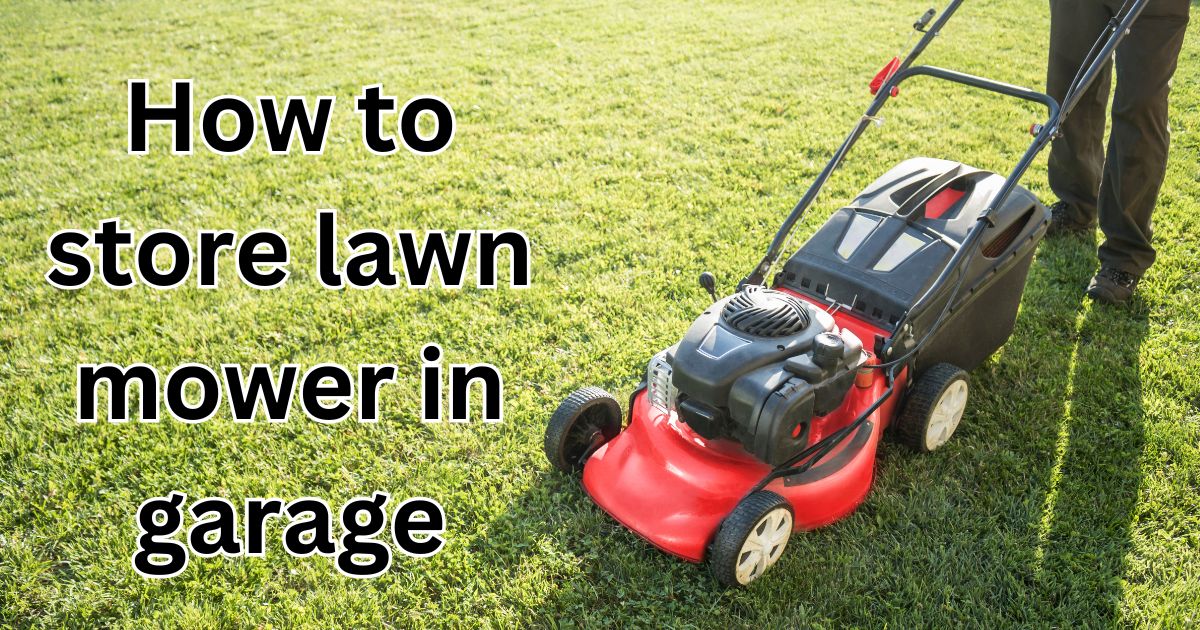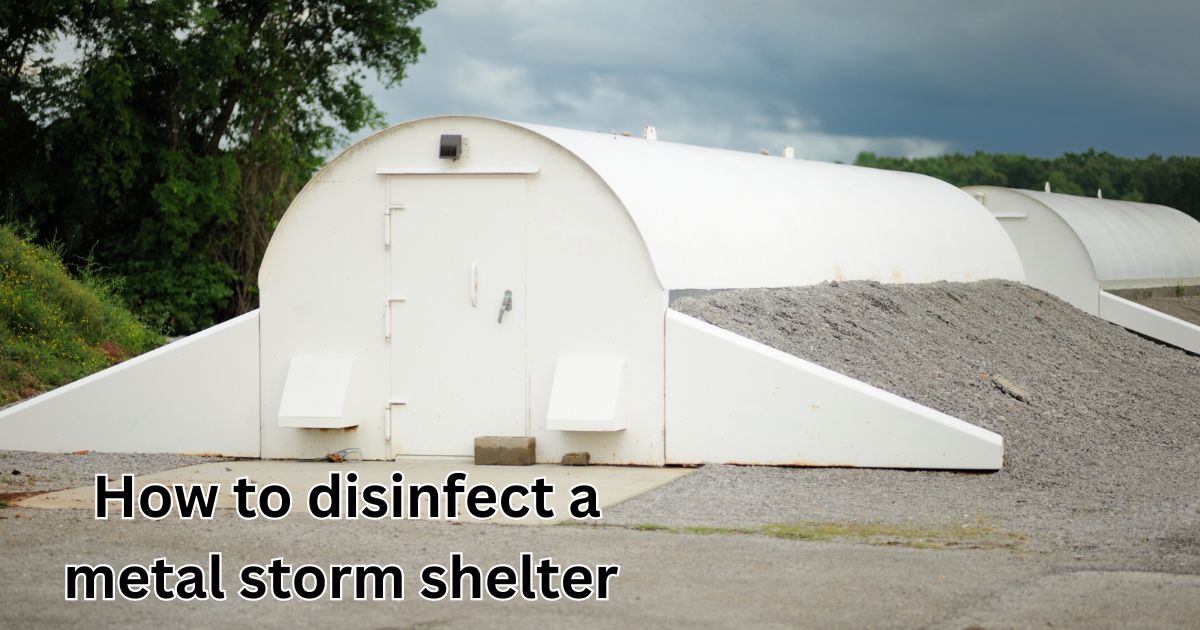Proper storage of your lawn mower can significantly extend its lifespan and ensure that it’s ready for action when you need it. If you’re storing your lawn mower in a garage, following the right procedures can prevent damage and keep your equipment in excellent condition. This guide will walk you through everything you need to know about how to store lawn mower in garage, from preparation to seasonal considerations. By adhering to these tips, you can avoid common pitfalls and maintain your lawn mower’s efficiency.
Overview of the Importance of Proper Lawn Mower Storage
Proper lawn mower storage is crucial to maintaining its performance and longevity. Storing a lawn mower incorrectly can lead to various issues, including rust, fuel degradation, and mechanical problems. When a lawn mower is exposed to elements like moisture or extreme temperatures, it can suffer from rusted components or deteriorated fuel, which may lead to expensive repairs. Furthermore, a well-stored lawn mower will start more easily and perform better, saving you time and effort when you’re ready to use it.
Benefits of Storing a Lawn Mower in a Garage
Storing your lawn mower in a garage offers multiple benefits. Firstly, a garage provides a controlled environment that shields your equipment from harsh weather conditions such as rain, snow, or excessive sun. This protection helps in preventing rust and corrosion on metal parts. Secondly, a garage helps in safeguarding your lawn mower from potential theft, as it is less accessible than outdoor storage options. Additionally, having the mower in a garage can keep it cleaner, reducing the frequency of necessary maintenance and making it easier to access whenever needed.
Preparing Your Garage for Lawn Mower Storage
Assessing the Available Space
Before storing your lawn mower, it’s essential to evaluate the available space in your garage. Assessing the dimensions and layout will help you determine the best location for the mower. Measure the area where you plan to store the mower, ensuring there’s enough room for both the mower and any additional tools or accessories you may need. Consider the maneuverability of the mower within the space to avoid any tight spots that might cause damage. By planning the space effectively, you can prevent potential issues and ensure that the garage remains organized.
Clearing and Organizing the Garage
A cluttered garage can lead to accidents and make it difficult to access your lawn mower. Start by clearing out any unnecessary items and organizing your garage to create a clean, dedicated space for the mower. Store other tools and equipment on shelves or in bins to keep them out of the way. An organized garage not only enhances safety but also ensures that you have easy access to the lawn mower when needed. Implementing storage solutions like wall hooks or shelves can help maximize your garage space and keep everything orderly.
Ensuring Proper Ventilation
Proper ventilation in your garage is crucial for maintaining a healthy environment for your lawn mower. When learning how to store a lawn mower in a garage, adequate airflow plays a significant role in preventing moisture buildup, which can lead to rust and mildew on the mower. Ensure that your garage has vents or windows that can be opened to facilitate air circulation. If natural ventilation is insufficient, consider installing a small fan to promote airflow. Proper ventilation not only protects your lawn mower but also helps in maintaining the overall condition of your garage and other stored items. By focusing on effective ventilation, you can significantly enhance the storage conditions and longevity of your lawn mower.
Cleaning the Lawn Mower Before Storage
Removing Grass and Debris
Before storing your lawn mower, it’s important to thoroughly clean it to prevent the buildup of grass and debris. Grass clippings and dirt can cause rust and decay if left on the mower for an extended period. Use a brush or a scraper to remove any visible debris from the mower’s deck, blades, and other components. For a more thorough clean, you can also use a hose to rinse off the mower, but make sure it is completely dry before storing. Cleaning your lawn mower before storage ensures that it remains in good condition and ready for use when needed.
Cleaning the Mower Blades
Mower blades often accumulate grass and soil that can cause them to become dull or rust over time. To clean the blades, first, disconnect the spark plug or remove the battery for safety. Use a wire brush or a specialized blade cleaner to scrub off any residue. For a deeper clean, you can soak the blades in a mixture of soapy water and scrub them with a brush. Dry the blades thoroughly before reattaching them to the mower. Sharp, clean blades are essential for an efficient mowing performance, so maintaining them properly is key.
Checking and Changing the Oil
Checking and changing the oil is an important maintenance step before storing your lawn mower. Old oil can become contaminated with debris and degrade over time, potentially causing engine damage. Check the oil level using the dipstick and inspect the oil’s condition. If the oil appears dirty or is low, change it according to the manufacturer’s recommendations. Use the appropriate oil type for your mower and follow proper disposal methods for used oil. Regular oil changes help in maintaining engine performance and prolonging the life of your lawn mower.
Preparing the Lawn Mower for Storage
Draining or Stabilizing the Fuel
Fuel can deteriorate over time, leading to starting issues and potential engine problems. To prevent this, you have two options: drain the fuel or stabilize it. If you choose to drain the fuel, run the mower until the tank is empty and then store it with an empty tank. Alternatively, you can add a fuel stabilizer to the tank, which helps preserve the fuel and prevents it from going stale. Follow the instructions on the stabilizer product and run the mower for a few minutes to ensure the stabilizer circulates through the engine. Proper fuel management is essential for ensuring that your lawn mower operates smoothly when you need it.
Disconnecting the Battery (for Electric Models)
How to store lawn mower in garage: For electric lawn mowers, disconnecting the battery is a crucial step to prevent potential damage and battery degradation. Remove the battery from the mower and store it in a cool, dry place. Avoid exposing the battery to extreme temperatures, which can affect its performance and lifespan. If your battery is removable, follow the manufacturer’s instructions for safe removal and storage. For built-in batteries, refer to the manual for guidance on long-term storage. Proper battery maintenance ensures that your electric mower is ready to go when you need it.
Lubricating Moving Parts
Lubricating the moving parts of your lawn mower helps prevent rust and ensures smooth operation when the mower is used again. Apply lubricant to the mower’s pivot points, cables, and other moving parts as specified by the manufacturer. Be sure to wipe away any excess lubricant to avoid attracting dust and debris. Proper lubrication reduces friction and wear, extending the lifespan of your mower’s components. Regular maintenance, including lubrication, is key to keeping your lawn mower in optimal working condition.
Choosing the Right Storage Solutions
Using a Lawn Mower Cover
A lawn mower cover is an effective way to protect your mower from dust, dirt, and potential damage. Choose a cover that fits your mower’s size and shape to ensure a snug fit. Look for covers made from durable, water-resistant materials to provide maximum protection. Covering your lawn mower helps keep it clean and prevents environmental factors from causing wear and tear. When selecting a cover, consider features like ventilation openings to prevent moisture buildup and straps or ties to secure the cover in place.
Also Read: How to fix broken tooth naturally
Installing Shelves and Hooks for Additional Tools
How to store lawn mower in garage: Installing shelves and hooks can help create an organized and efficient storage space for your lawn mower and other tools. Shelves can hold accessories, fuel, and maintenance supplies, while hooks are useful for hanging items like rakes, shovels, and extension cords. Properly utilizing vertical space helps in maximizing storage capacity and keeps your garage neat. Ensure that the shelves and hooks are installed securely to handle the weight of the items and consider placing frequently used tools within easy reach.
Using a Storage Rack or Stand
A storage rack or stand can help keep your lawn mower off the ground and prevent contact with potentially damaging surfaces. A mower stand allows you to store the mower upright, which can save space and make it easier to access the underside for maintenance. Look for a sturdy, stable rack or stand that can support the weight of your mower and fits well within your garage space. Using a storage rack not only keeps your mower in good condition but also helps in maintaining a tidy and organized garage environment.
Storing the Lawn Mower in the Garage
Proper Placement to Avoid Damage
Proper placement of your lawn mower in the garage is essential to avoid potential damage. Choose a location that provides enough space around the mower to prevent accidental collisions with other items. Avoid placing the mower near walls or in areas where it might get knocked over. Ensure that the area is dry and free from potential hazards that could cause damage. If possible, store the mower in a dedicated corner or space to keep it protected and easily accessible.
Securing the Mower to Prevent Movement
Securing your lawn mower helps prevent it from moving or tipping over during storage. Use straps, bungee cords, or a dedicated mower stand to keep the mower in place. Ensure that the mower is stable and won’t shift or fall, especially if the garage is used for other activities or storage. Securing the mower helps prevent accidental damage and keeps your garage organized. Additionally, it reduces the risk of potential safety hazards that could arise from an unstable mower.
Ensuring Adequate Clearance Around the Mower
Providing adequate clearance around your lawn mower is crucial for easy access and maintenance. Ensure that there is enough space on all sides of the mower to allow for safe movement and operation. Avoid overcrowding the area with other items or tools that could obstruct access or cause accidents. Adequate clearance also helps in preventing damage to the mower’s components and makes it easier to perform routine checks and maintenance. Maintaining a clear and accessible storage area ensures that your lawn mower remains in good condition and ready for use.
Preventing Common Storage Issues
Avoiding Moisture and Rust
Moisture is one of the biggest enemies of metal parts on a lawn mower, leading to rust and corrosion. To prevent moisture buildup, ensure that your garage is well-ventilated and avoid storing the mower in a damp or humid environment. Use a cover or tarp to provide an extra layer of protection against moisture. Regularly check the mower for any signs of rust and address them promptly. Keeping the mower dry and clean helps maintain its performance and extends its lifespan.
Preventing Rodent Infestations
Rodents can be a significant problem when storing a lawn mower, as they may chew on wires and cause damage. To prevent rodent infestations, ensure that your garage is sealed and free from entry points. Store the mower on a raised platform or rack to keep it off the ground. Use rodent repellents or traps to deter any potential pests. Regularly inspect the storage area for signs of rodent activity and take necessary actions to address any issues. Preventing rodent infestations helps protect your lawn mower and other stored items.
Addressing Potential Fuel Leaks
Fuel leaks can be hazardous and damaging to your lawn mower. Before storing your mower, check for any signs of fuel leaks and address them immediately. Ensure that the fuel tank is properly sealed and inspect the fuel lines and connections for any damage. If you notice any leaks, repair them according to the manufacturer’s instructions. Properly managing fuel and addressing leaks helps prevent potential hazards and keeps your lawn mower in good working condition.
Seasonal Considerations
Winter Storage Tips
Winter storage requires special attention to ensure that your lawn mower remains in good condition during the colder months. If you live in an area with harsh winters, consider storing your mower in a heated garage or shed to prevent freezing temperatures from affecting it. Drain the fuel or add a stabilizer, as previously mentioned, to prevent fuel deterioration. Additionally, clean the mower thoroughly and cover it with a protective cover. If you have a riding mower, consider removing the battery and storing it in a warmer location. Preparing your mower for winter helps in preventing potential damage and ensures it is ready for use in the spring.
Preparing the Mower for Spring Use
As spring approaches, it’s important to prepare your lawn mower for the new mowing season. Check the oil levels and change the oil if needed. Inspect the mower for any signs of wear or damage that may have occurred during storage. Reconnect the battery if it was removed and ensure that the fuel is fresh or stabilized. Sharpen the blades and clean the mower thoroughly before use. Performing these tasks ensures that your lawn mower is in optimal condition and ready to tackle your lawn care needs efficiently.
Checking the Mower Before the Next Use
Inspecting for Rust and Corrosion
Before using your lawn mower after storage, inspect it thoroughly for any signs of rust or corrosion. Rust can occur on metal parts if the mower was not stored properly. Check the blades, deck, and other components for any rust spots and address them promptly. Use a wire brush or sandpaper to remove light rust and apply a rust inhibitor if necessary. Ensuring that the mower is free from rust helps maintain its performance and extends its lifespan.
Rechecking Fluid Levels
Rechecking fluid levels is an important step before using your lawn mower again. Check the oil level and add more if necessary. Ensure that the fuel tank is filled with fresh fuel or stabilized fuel if it was stored for an extended period. Additionally, check other fluids, such as coolant if applicable, and top them off as needed. Proper fluid levels are essential for the smooth operation of your lawn mower and help prevent potential mechanical issues.
Testing the Battery and Starting Mechanism
Test the battery and starting mechanism to ensure that your lawn mower starts smoothly after storage. If you have a gas-powered mower, check the spark plug and replace it if necessary. For electric models, ensure that the battery is fully charged and functioning properly. Try starting the mower and listen for any unusual sounds or issues. Address any problems promptly to ensure that your lawn mower operates efficiently and is ready for use when you need it.
Troubleshooting Common Problems
What to Do if the Mower Won’t Start
If your lawn mower won’t start, there could be several potential issues. First, check the fuel level and ensure that it’s fresh or stabilized. Inspect the spark plug for any signs of damage or wear and replace it if needed. For electric mowers, verify that the battery is charged and properly connected. If the mower still doesn’t start, consult the owner’s manual for troubleshooting tips or seek professional assistance. Identifying and addressing the root cause of starting issues helps ensure that your lawn mower is operational and ready for use.
Handling Issues with the Battery
Battery issues can affect the performance of electric lawn mowers. If you’re experiencing problems with the battery, check for loose or corroded connections and clean them if necessary. Ensure that the battery is fully charged and test it with a multimeter to check its voltage. If the battery is old or damaged, consider replacing it with a new one. Proper battery maintenance and timely replacement help ensure that your electric mower operates efficiently and reliably.
Dealing with Stale Fuel
Stale fuel can cause starting issues and affect the performance of your lawn mower. If the fuel has been stored for an extended period, it may have degraded and lost its effectiveness. To address this, drain the old fuel from the tank and replace it with fresh fuel. You can also add a fuel stabilizer to the new fuel to prevent future degradation. Regularly refreshing your fuel supply helps in maintaining your mower’s performance and preventing potential fuel-related problems.
Enhancing Garage Storage Efficiency
Implementing Organizational Systems
Implementing organizational systems in your garage can significantly improve storage efficiency and accessibility. Use shelving units, pegboards, and bins to organize tools, accessories, and maintenance supplies. Labeling bins and shelves helps in easily locating items and keeping track of what you have. By creating a well-organized storage system, you can maximize garage space and ensure that everything, including your lawn mower, is easily accessible when needed.
Utilizing Vertical Space Effectively
Utilizing vertical space in your garage can help in maximizing storage capacity and keeping the area organized. Install wall-mounted shelves, hooks, or racks to store items like tools, gardening supplies, and the lawn mower itself. By making use of vertical space, you can free up floor space and keep your garage less cluttered. Properly organizing vertical storage helps in maintaining an efficient and functional garage environment.
Maintaining a Clean and Functional Garage
A clean and functional garage not only enhances the overall storage experience but also contributes to the longevity of your lawn mower and other equipment. Regularly clean your garage to remove dust, debris, and potential hazards. Ensure that the storage area is well-lit and accessible for easy use and maintenance. By maintaining a clean and organized garage, you create a conducive environment for storing your lawn mower and other tools, making it easier to keep everything in good condition.
Conclusion
How to store lawn mower in garage involves a series of important steps to ensure its longevity and optimal performance. By preparing your garage, cleaning and maintaining your mower, and addressing common storage issues, you can effectively protect your equipment from damage and deterioration. Regular checks and seasonal preparations help keep your lawn mower in top condition, ready for use whenever you need it. Adhering to these guidelines ensures that your lawn mower remains a reliable tool for maintaining your lawn and garden. Proper storage not only extends the life of your mower but also enhances its efficiency, making your lawn care tasks easier and more enjoyable.









